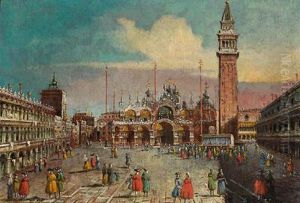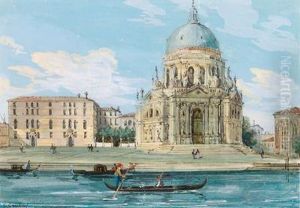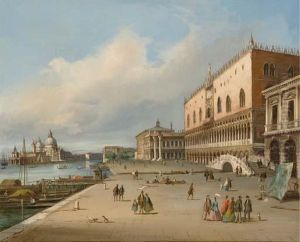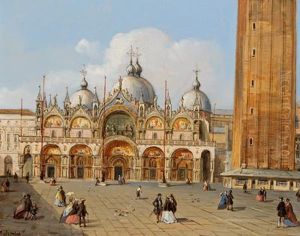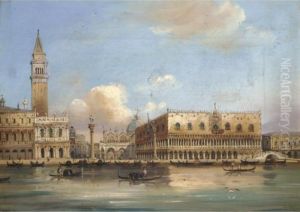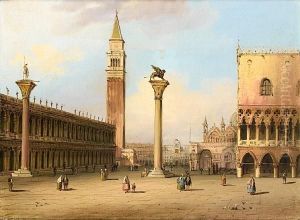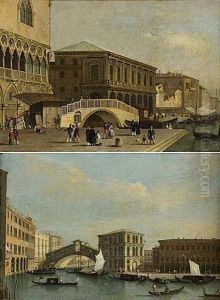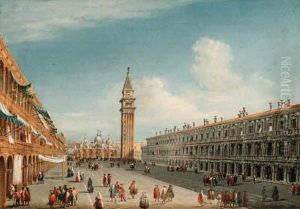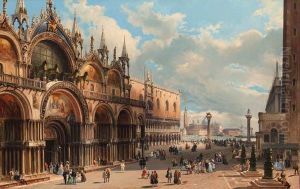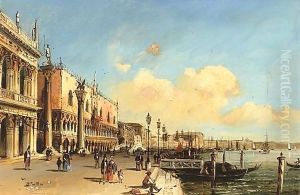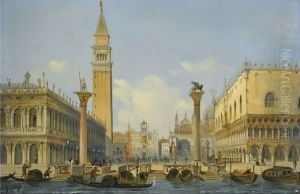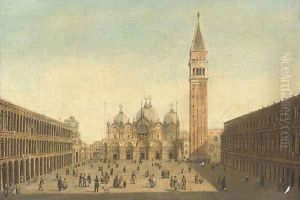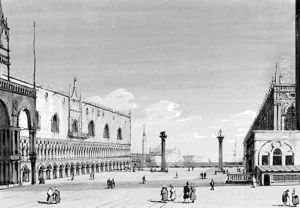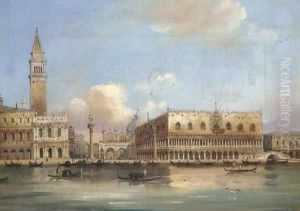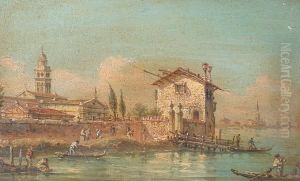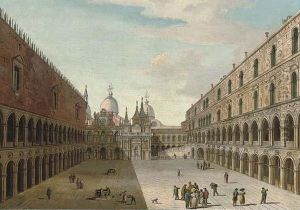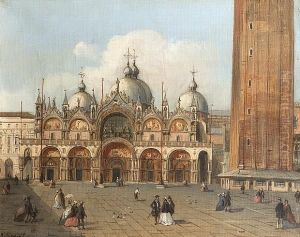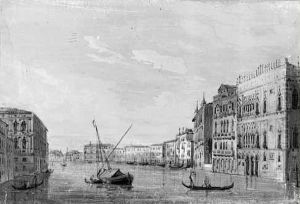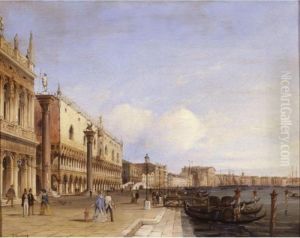Carlo Grubacs Paintings
Carlo Grubacs was a 19th-century Italian painter known primarily for his vedute, which are detailed paintings of city scenes. Born in 1802 in Venice, Italy, Grubacs belonged to a family of painters; his father, Giovanni Grubacs, was also a painter who influenced his early training and artistic development. Venice, with its unique architecture and picturesque canals, provided the perfect backdrop for Grubacs’s work, and he became renowned for his captivating portrayals of the city.
During his lifetime, Carlo Grubacs’s work gained appreciation for its meticulous attention to architectural accuracy and its atmospheric quality. He was particularly adept at capturing the effects of light on water and stone, which added a romantic allure to his paintings. His works often featured famous Venetian landmarks, such as the Doge's Palace, St. Mark's Basilica, and the Grand Canal, as well as the everyday life of its inhabitants.
Grubacs’s paintings were not only appreciated in Italy but also found an audience among foreign collectors and tourists who desired keepsakes of the enchanting city of Venice. His vedute can be considered part of the larger tradition of Venetian view painting that includes artists like Canaletto and Francesco Guardi, although Grubacs’s style was distinct in its romantic overtones and less formal approach.
Despite his success, there is not a substantial amount of information available on the personal life of Carlo Grubacs. He worked during a period of significant political and social change in Italy, including the movements leading to the unification of Italy. However, his art remained focused on the timeless beauty of Venice.
Carlo Grubacs died in 1870, leaving behind a legacy as one of the skilled vedutisti (view painters) of the 19th century. His works continue to be admired for their beauty and historical value, offering a window into the Venice of the past. Today, Grubacs's paintings are sought after by collectors and can be found in private collections and occasionally appear at art auctions. They serve as a testament to the enduring allure of Venice and the artistic tradition that celebrates its splendor.
